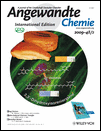SLEEPLESS-ness and Insomnia in Fruit Flies†
We acknowledge The Skaggs Institute for Chemical Biology, the Ruth L. Kirschstein National Research Service Award, and the Novartis Graduate Fellowship in Organic Chemistry for Women and Minorities.
Graphical Abstract
Lord of the flies: A gene, sleepless, has been identified in Drosophila that when mutagenized imparted an extreme short-sleeping phenotype. SLEEPLESS expression is independent of the circadian clock and was found to participate in the homeostatic regulation of sleep. Namely, SLEEPLESS appears to be a signaling molecule that couples sleep drive to changes in membrane excitability (see picture).





